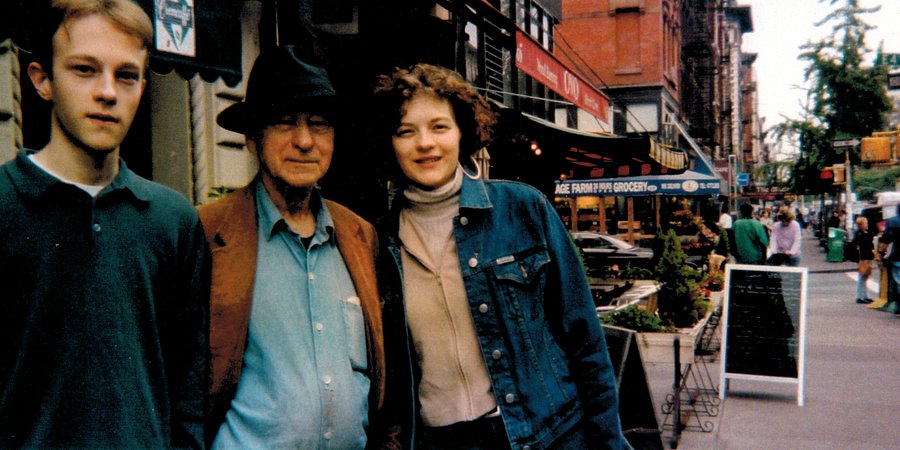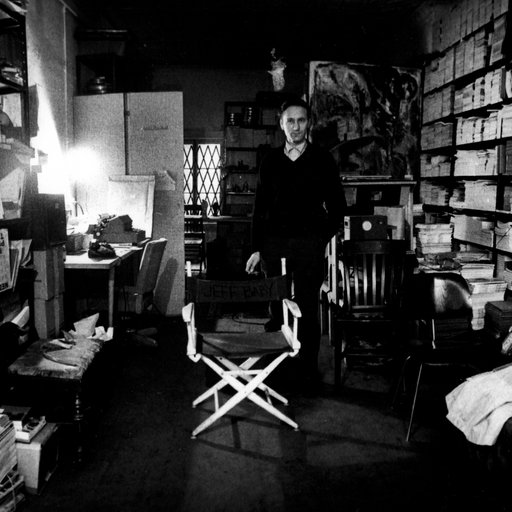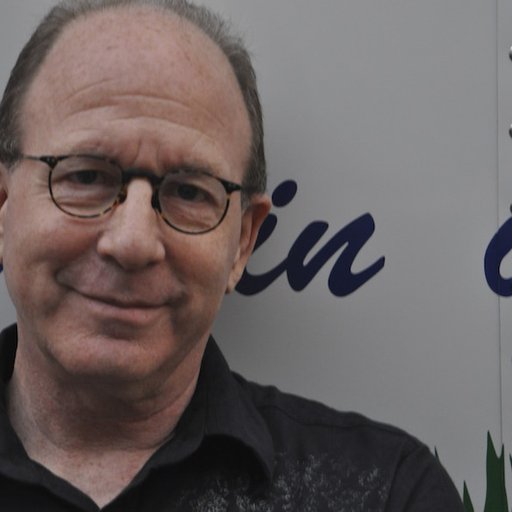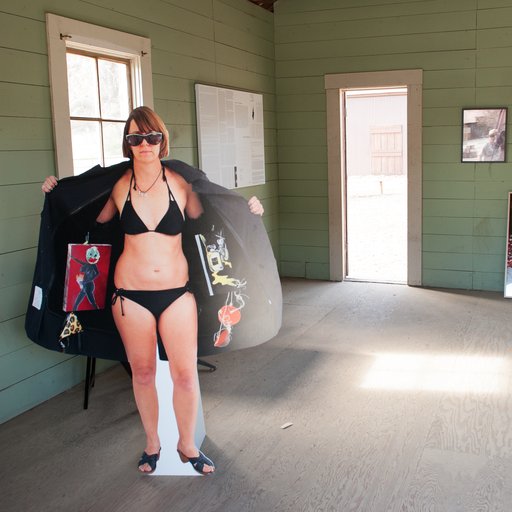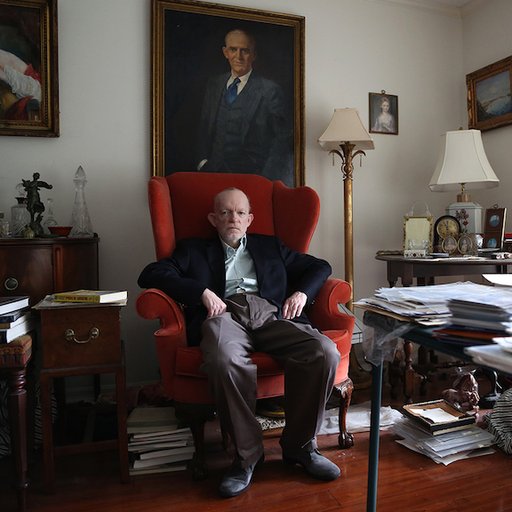Jonas Mekas is no stranger to turbulence. As we recounted in the first part of our interview, the 92-year-old filmmaker, writer, curator, and organizer fled his native Lithuania fearing Nazi persecution, emigrated to New York, and witnessed (and in some cases catalyzed) the birth of art movements including Fluxus and Pop. These experiences have made him open-minded and cautiously optimistic about major upheavals in the art world, including the rise of digital technology.
For the past decade Mekas has focused his still-formidable energy on digital video works, including his seminal 365 Day Project (in which he shot, edited, and uploaded a new short video work every day of 2007), all the while retaining his affection and respect for the medium of film. In Part II of our conversation, the famed filmmaker discusses the "invisible technology" of digital videos, his plans for the Anthology Film Archives, and why he's ready for people to stop calling his films "experimental."
The New York avant-garde of the 1960s and ‘70s has become a kind of golden era in the minds of many contemporary art world denizens. As someone who was integral to the development of this fecund period in art history, what do you make of the art world of today?
I think we are now in such a period. The center of it is digital arts and digital technology, and we all do things now without thinking, “Oh this could be the stuff of history. How will people look back on this?” It’s just being done because somebody has to do it, because they are obsessed, possessed, and do it. Looking at my own 365 Day Project, I just did it because I wanted to. Now, eight years later, I look back and say, “Why did I do it?” It was crazy to do it. But that is how things are done.
There is a lot happening that we’re not really aware of. Poetry on the internet, for example—there is a lot happening in that area. A number of people are exploring the possibilities of the digital, and it has nothing to do with written poetry or even film or video. It’s already different, because you cannot do with film what you can do with digital technologies.
Unlike many artists from your generation, you seem to have fully embraced digital techniques in your art making. How do you think about these new technologies?
I would call it “invisible technology.” We see the results, but the technology itself is almost invisible. In film, video, cassette recordings, you can still see and touch the material. They can disintegrate in front of your eyes. Not so for digital technology. It’s like watching a spirit—there are results, but you don’t see how they got there.
How do you think the loss of that physical dimension changes the way you approach filmmaking?
I don’t think we really know how to talk about it yet. We know that it works, we see the results, but how to talk about it? We need a new vocabulary. Some of the achievements, the best or most interesting things, are not always immediately visible. So much is done that disappears or is seen only by friends.
It’s the same as the ‘60s. When I was running the Filmmaker’s Cinematheque there was a community of maybe 100 interested people in New York. Sometimes we had 20 people show up, sometimes all 100 came, but always the same people even though New York already had a population of over 7 million at the time. The digital community is similar—we exchange with some people whose interests are similar, but it's limited despite the number of people. There are different people, different centers, different activities—if you know where they are you can access them, if not you can’t see it. It’s invisible.
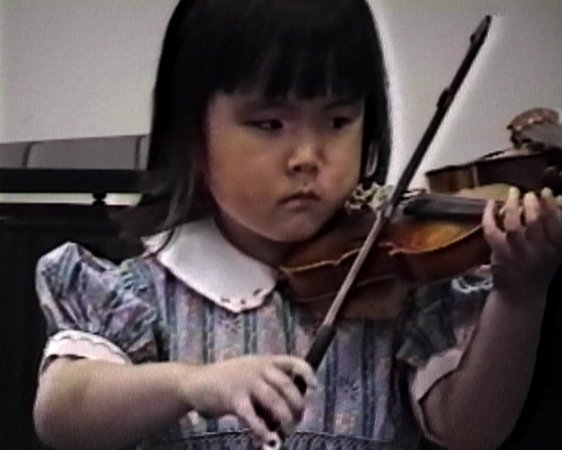 Still from 365 Day Project, January 21. Image courtesy of the artist.
Still from 365 Day Project, January 21. Image courtesy of the artist.
Is that one of the main differences between the artistic community then and now, that there are so many more people that are so much more distantly connected?
Yes, because it became more personal. We were in a stage of writing letters, a civilization where people communicated by hand. One inhabited personal, small circles. Now if you want you can make yourself available to all, in a way written letters were not. Now you can put it online and ideally there will be millions who see it, or else just your friends. You have the possibility to make things easily open to the public, available to everyone. In the early periods of film and video, access was restricted to the galleries and the places that had a projector, which drastically affects how those works were disseminated. Video works online have become more like newspapers—you go to a newsstand and see 30 magazines. It’s a lot of junk, but you follow those that you like.
Your 365 Day Project was a massive undertaking, one that saw you uploading a new short video piece to your site every day of 2007. What was the most difficult part of that process?
It was a challenge—what can be done in one day, every day, without missing a single day? Very often I would have to tape and release on the same day. It was a challenge to find what one could do with the new technologies available today. That year I was travelling a lot, so wherever I was I had to be ready. When I add all the footage together from that year, I produced the equivalent of 20 feature length films. I continue making these digital shorts even now, but only upload them once or twice a week.
You’ve been posting your video diary pieces to your site since 2006, well before you started on the 365 Day Project. To put that in context, YouTube was founded in 2005, ushering in the era of the online vernacular video in which people document and share their lives without claiming their efforts as art. Do you see your work and the output of so-called “non-artists” as being similar?
I think I’m not very different from them. Maybe I am more obsessed or more intense, but we’re working in the same direction. I’m working in the home movie making tradition.
I don’t even have time to watch YouTube—I really only watch when someone sends me something they think I should look at, usually some funny thing. Now this kind of filmmaking is normal. Everybody, almost, has their own site. I see it as the equivalent of exchanging letters or keeping a diary. There has always been a need that some people have to keep a notebook or diaries. It’s normal.
 Still from 365 Day Project, February 21. Image courtesy of the artist.
Still from 365 Day Project, February 21. Image courtesy of the artist.
Your screenings of radical films provoked the ire of the censors when they were shown in 1964. Do you see similar forms of repression at work today?
We have the same thing now, in a different way. Political correctness is worse than that kind of stupid censorship, because political correctness can be used to forbid anything. Who knows what will insult whom? I think we are in a worse state now. If you don’t know what joke you’re allowed to tell, where are we? Political correctness extends into discussions of race, sex, religion, everything. It’s not just telling certain jokes or not showing some parts of the human body. It’s much worse.
The Anthology Film Archives, the internationally renowned center for experimental film studies and preservation that you founded in 1970, is undergoing some major renovations soon. What can you tell me about this endeavor?
My project for this year and next year will be working on updating the Anthology Film Archives building. We have films, but very few people know that we also have the largest print library of materials on cinema in the United States. We have thousands and thousands of periodicals and books, but we’re also getting more contributions from the estates of filmmakers who have died with things like journals and other kinds of documents. We have boxes and boxes of materials, and they are not available to scholars.
My project is to build an additional floor on top of the original building, which will be the library floor. This will be a place to display all of the original materials and also accept new materials that are being donated. At the same time, we’re building a café accessible to our patrons and the local community to help us financially. We’re also building another floor for performance pieces, in addition to the paper materials library. It's a $6 million project—no fun, but that’s what I’m on. To anybody who will give me money to build a library: I will happily put their name in the library. Everybody is welcome to help me build this library.
There are files on individual filmmakers, so we are beginning with this documentation—their scripts, their production notes. Those who write books and students who write dissertations come to do research at Anthology, so we’ll be expanding that part of our operation after we build the library. There are smaller collections here and there, and MoMA has something on cinema although their emphasis is on art in general, but nothing as extensive as Anthology.
The library will serve not only the neighborhood and New York—we’re digitizing the collection. There are requests from China, from Brussels, from everywhere, so soon we’ll be able to serve the rest of the world. We have the largest collection of information on independent and avant-garde filmmakers, but also on better-known figures. If you want to find books on Pasolini, come to Anthology and there will be a whole shelf dedicated on him, not just one little volume. The same is true for any filmmaker.
 Still from 365 Day Project, March 1. Image courtesy of the artist.
Still from 365 Day Project, March 1. Image courtesy of the artist.
You also have an exhibition of your work opening in Italy in May, during this year’s Venice Biennale (“The Internet Saga,” curated by Francesco Urbano Ragazzi). What will this entail?
There will be 768 slides made into transparencies covering the windows of the Palazzo Foscari Contarini, which is actually now a Burger King. It’s a beautiful old building with large windows, but at the same time there will also be some people having lunch [laughs]. It’s a challenging to do something with it, but it’s spacious enough for both. There will be screens running images continuously, in addition to these stained-glass windows of my slides. There will also be a sound installation outside in the garden. It’s a 90-minute piece that consists of about 70 different sounds from my life, a variety of different sounds of life in New York.
You’re constantly referred to as an “avant-garde filmmaker.” Is it still meaningful to speak of “the avant-garde” in terms of 21st century art making?
I go by the dictionary meaning of the avant-garde: the front line. In technology, in style, whatever it is, it’s content that has never been touched, something that people don’t know how to take when they see it. There’s always that front line, and that’s what the avant-garde is.
In cinema, for instance, there is what we call independent or non-narrative films or poetic forms of cinema. In the ‘20s, ‘30s, ‘40s, and into the ‘50s it was called “avant-garde.” Even today we sometimes refer to those films as avant-garde, which we connect to time, to a certain period. If you talk seriously about cinema, you discuss it in terms of different forms, not these broad categories like experimental, personal, non-Hollywood. When we discuss literature, we discuss novels, short stories, sonnets, haiku—different forms of literature. We are not there yet in cinema. We do not discuss cinema in those specific terms—we are still discussing cinema in fashionable terms.
Why do you think that is?
It's the immaturity of film history, how we discuss and present the history of cinema. It will come. Right now, we go by how much it will cost. We say things like “commercial films.” We are entering a period when “commercial film” is losing its meaning. We used to say that we weren’t interested in making commercial films, but now, because of the Internet, what is commercial? Do you judge by how much it costs? The number of people it reaches? What is this term, “commercial”? Some films made for 15,000 suddenly hit every theater in the country, and one made for 115 million becomes a dead duck. It makes no sense anymore.
Now you start to ask whether it’s a narrative, or whether it fits into a certain genre like a Western—that’s legitimate. But to lump almost half of cinema, almost all the non-narrative forms under “independent” or “experimental” or “avant-garde” is total nonsense.
 Still from 365 Day Project, April 19. Image courtesy of the artist.
Still from 365 Day Project, April 19. Image courtesy of the artist.
In an earlier interview with Hans Ulrich Obrist, you said that “The oppositional stance [of the avant-garde] is needed only psychologically; it is like an excuse to make a drastic change in their practices.” Does this still seem to be the case?
It’s dictated by the society. There will always be political cinema taking various forms—there always was and there always will be. A position could also develop against certain styles that become overused. When George Maciunas and others said they were against art, they did not really mean it. You can see what they produced as art today, but it was a legitimate stance, to rebel against certain established forms or content. Now, people are beginning to rebel against how art is exhibited and sold, against the commercial galleries that reduce art to how much it can sell for. There are smaller galleries emerging in Brooklyn that are very much against the system. Some of them get caught in the same game, but there is an oppositional move in the gallery world against Gagosian and the art fairs.
Speaking of “the system,” what do you make of the explosion of the art market in the past 10 or 20 years?
It’s a transitional stage. Maybe we are at the end. I was in St. Petersburg at the Hermitage, which had just opened its contemporary art wing. While I was there the director Mikhail Piotrovsky showed me this new wing, and there it was: Malevich’s Black Square. It was displayed along with a Fluxus show and my own 365 Day Project for the opening of the wing. It was made exactly 100 years ago this year—to them, that’s where Modern art begins.
But now we are 100 years later, and I think that Modern art has exhausted itself, just as Postmodernism has exhausted itself. We may be in some kind of dead spot now, where all that’s left is money. Whatever you make you can sell, if you put money into selling it. When you go to the Whitney Biennials, which I’ve stopped going to, it’s all the same. My feeling is that we’re in a transitional period. What will come, I don’t know, but I think it will of course be affected by new technologies. I crave the smell of paint and colors, not the new technological colors but real paint produced by ground stones.
It’s interesting to hear you say that, because you’ve clearly embraced digital filmmaking.
Yes, but when I see a physical film projected on a digital screen, one that had no silver crystals in it, I get angry, almost. Film should be projected only on silver screens that were made reflective specially for film, because it is a reflective medium. You have to love it for what it is, for what it’s all about. Video is different, and you love video for what video is. Each medium has its charms. You love watercolors for the special properties of what watercolors can do. Oils cannot do what watercolors can do, just as 16mm film cannot produce the effects of 8mm film, and so on down the line. We are now in a very complex period and I think it will last for some time. We’re still in the digital era, and I cannot predict what’s next. The digital will have a big effect, unless there is a return to wood, to ground stone pigments [laughs]. There I stop—I leave it to the future.
What about the present? Do you have any further thoughts on the state of artistic production today?
This moment is just an extension of the last 100 years, just watching and rewatching. In the introduction to his book The Shadow Line, Joseph Conrad writes that there is a time when one is very young and does everything without thinking, where one does not care who says what—one just does it. Then, in time, the shadow line comes in, usually when we are 27 or so, when we begin to look back and listen to who says what, where we begin to pay attention to what people are saying. The real creation comes before the shadow line. What we have now in the arts is already beyond the shadow line. We repeat, we look back, we recreate, we make comments on it, we redo the same thing in a different way—that’s where we are. There is very little new.
I may just be missing it—there may be someone somewhere already doing something new that we don’t know about. I don’t go out that much, but there may be. I hope there is. There must be, somewhere, the first emerging buds of something new. There must be.











